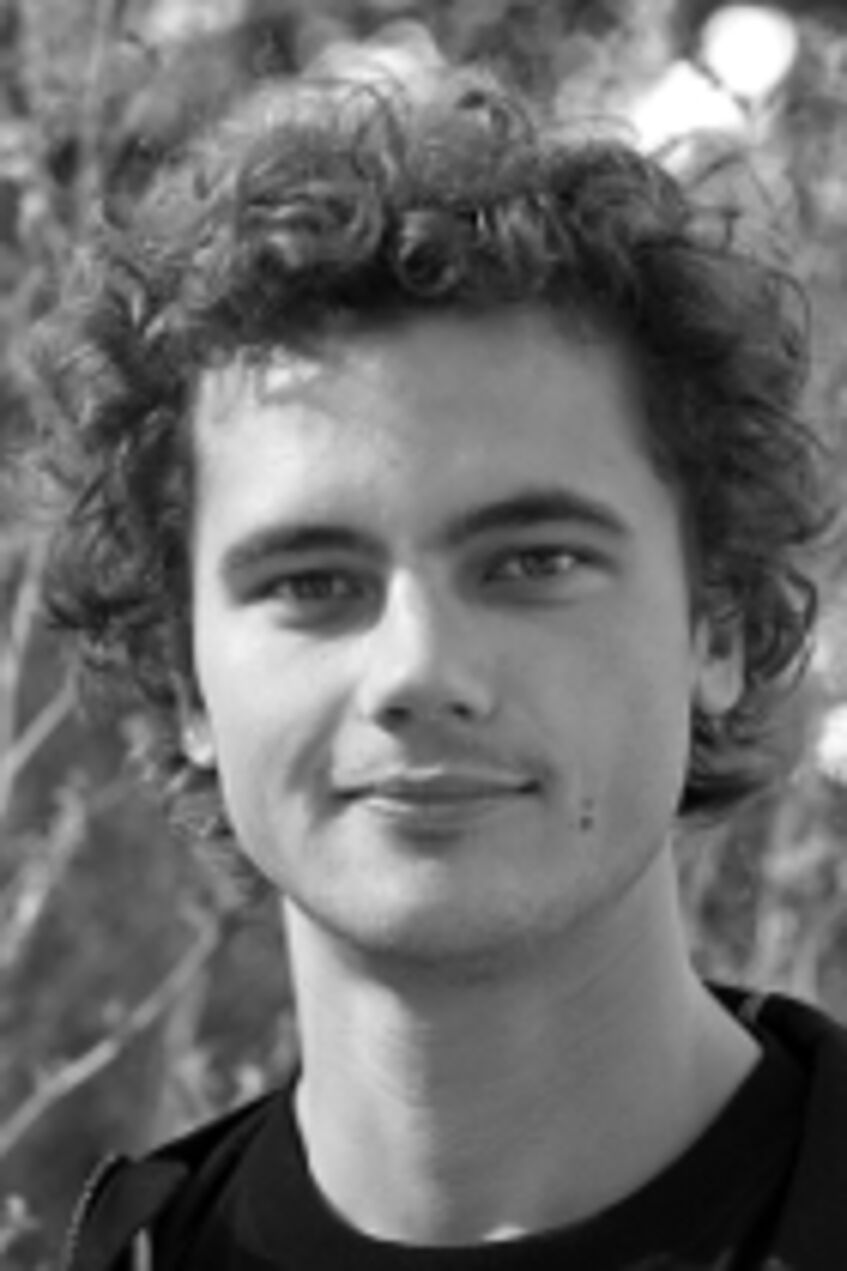Mag. Florian Etl, PhD
Scientific project collaborator (Post doc)
4. floor, room 414
t: +43 (0)1 4277-540 83
m: florian.etl@univie.ac.at

Media contributions
- Science-News-Article:
"Plant turns suspected crop pest into pollinator" – 13. October 2022 - Science ORF.at
"Blüten nutzen Parasiten als Bestäuber" - 6. Oktober 2022 - Online-Artikel im Medienportal der Universität Wien:
"Aus Feind wird Freund: Schädlinge werden zu Pflanzenbestäubern" - 6. Oktober 2022
Research interests
- Pollination biology
- Seed dispersal
- Entomology
- Tropical ecology
Teaching
Curriculum Vitae
Current position
- 2024–2027 Post doc
Education and scientific career
- 2016–2024 PhD-student
- 2016–2020 University assistant (prae doc)
- 2011–2013 Diploma theses
- 2011 (Oct) Students assistant at the TBA field course in Tropical Ecology and Conservation, Malaysia, Borneo, Danum Valley field centre and data collection on Alocasia sarawakensis (Araceae)
- 2011 (Feb) Data collection on Dieffenbachia aurantiaca (Araceae) in Costa Rica, tropical field station La Gamba
- 2010 (Oct) TBA (Tropical Biology Association) field course in Tropical Ecology and Conservation in Malaysia, Borneo, Danum Valley field centre
- 2010–2012 Scientific project collaborator in the FWF-project "Evolution and functionality of kettle traps in the Araceae". Investigating pollination biology, thermogenesis and fruit dispersal of Araceae in Costa Rica and Borneo
- 2009 National Park Ranger in the national park "Neusiedlersee-Seewinkel". Generating projects in environmental education
- 2009–2010 Scientific project collaborator on honey bee magnetoreception (IMP Vienna, Oxford University field station). Conditioning honeybees to distinguish between different magnetic fields
- 2006 Study of biology (ecology) at the University of Vienna, Austria
Publications
Showing entries 1 - 13 out of 13
2025
Liu, J. W., Etl, F., Otárola, M. F., Karremans, A. P., & Ramírez, S. R. (2025). The Evolution and Ecology of Specialized Mutualisms Between Perfume Flowers and Male Euglossine Bees. Annual Review of Ecology, Evolution, and Systematics, 56, 241-264. https://doi.org/10.1146/annurev-ecolsys-102723-064710
2022
Etl, F., Kaiser, C., Reiser, O., Schubert, M., Dötterl, S., & Schönenberger, J. (2022). Evidence for the recruitment of florivorous plant bugs as pollinators. Current Biology, 32(21), 4688-4698.E6. https://doi.org/10.1016/j.cub.2022.09.013
Etl, F., Francke, W., Schönenberger, J., & Dötterl, S. (2022). Chemical Attraction of Gall Midge Pollinators (Cecidomyiidae: Cecidomyiinae) to Anthurium acutangulum (Araceae). Journal of Chemical Ecology, 48, 263-269. https://doi.org/10.1007/s10886-022-01349-3
2021
Asenbaum, J., Schäffler, I., Etl, F., Dötterl, S., Schönenberger, J., & Chartier, M. (2021). Comparative Pollination Ecology of Five European Euphorbia Species. International Journal of Plant Sciences, 182(9), 763-777. https://doi.org/10.1086/715759
Brandt, K., Dötterl, S., Ramírez, S. R., Etl, F., Machado, I. C., Navarro, D. M. D. A. F., Dobler, D., Reiser, O., Ayasse, M., & Milet-Pinheiro, P. (2021). Unraveling the Olfactory Biases of Male Euglossine Bees: Species-Specific Antennal Responses and Their Evolutionary Significance for Perfume Flowers. Frontiers in Ecology and Evolution, 9, Article 727471. https://doi.org/10.3389/fevo.2021.727471
Stamm, P., Etl, F., Maia, A. C. D., Dötterl, S., & Schulz, S. (2021). Synthesis, Absolute Configurations, and Biological Activities of Floral Scent Compounds from Night-Blooming Araceae. The Journal of Organic Chemistry, 86(7), 5245-5254. https://doi.org/10.1021/acs.joc.1c00145
2019
Maia, A. C. D., Grimm, C., Schubert, M., Etl, F., Gonçalves, E. G., Do Amaral Ferraz Navarro, D. M., Schulz, S., & Dötterl, S. (2019). Novel Floral Scent Compounds from Night-Blooming Araceae Pollinated by Cyclocephaline Scarabs (Melolonthidae, Cyclocephalini). Journal of Chemical Ecology, 45(2), 204-213. https://doi.org/10.1007/s10886-018-1018-1
Maia, A. C. D., Grimm, C., Schubert, M., Etl, F., Gonçalves, E. G., Do Amaral Ferraz Navarro, D. M., Schulz, S., & Dötterl, S. (2019). Correction to: Novel Floral Scent Compounds from Night-Blooming Araceae Pollinated by Cyclocephaline Scarabs (Melolonthidae, Cyclocephalini). Journal of Chemical Ecology, 45(2), 214-215. https://doi.org/10.1007/s10886-018-1026-1
Etl, F., Brandauer, S. S., Brandauer, P., Prader, S., Neier, V., Dötterl, S., & Schönenberger, J. (2019). Flower visitors of Calathea lutea (Marantaceae): The role of the hummingbird Threnetes ruckeri. Acta ZooBot Austria , 156, 183-196.
2018
Junker, R. R., Kuppler, J., Amo, L., Blande, J. D., Borges, R. M., van Dam, N. M., Dicke, M., Doetterl, S., Ehlers, B. K., Etl, F., Gershenzon, J., Glinwood, R., Gols, R., Groot, A. T., Heil, M., Hoffmeister, M., Holopainen, J. K., Jarau, S., John, L., ... Koellner, T. G. (2018). Covariation and phenotypic integration in chemical communication displays: biosynthetic constraints and eco-evolutionary implications. New Phytologist, 220(3), 739-749. https://doi.org/10.1111/nph.14505
2017
Etl, F., Franschitz, A., Aguiar, A. J. C., Schönenberger, J., & Dötterl, S. (2017). A perfume-collecting male oil bee? Evidences of a novel pollination system involving Anthurium acutifolium (Araceae) and Paratetrapedia chocoensis (Apidae, Tapinotaspidini). Flora: Morphology, Distribution, Functional Ecology of Plants, 232, 7-15. https://doi.org/10.1016/j.flora.2017.02.020
Etl, F., Franschitz, A., Aguiar, A. J. C., Dötterl, S., & Schönenberger, J. (2017). Perfume-collecting male oil bees? Evidence for a novel pollination system involving Anthurium acutifolium (Araceae) and Paratetrapedia chocoensis (Apidae, Tapinotaspidini). In XIX IBC 2017, Abstract Book I: Oral Presentations (pp. 248-249). Article T2-55-06
2016
Etl, F., Berger, A., Weber, A., Schönenberger, J., & Dötterl, S. (2016). Nocturnal plant bugs use cis-jasmone to locate inflorescences of an Araceae as feeding and mating site. Journal of Chemical Ecology, 42(4), 300–304. https://doi.org/10.1007/s10886-016-0688-9
Showing entries 1 - 13 out of 13
Etl, F. (2013). Reproduktionsökologie tropischer Aronstabgewächse (Araceae) am Beispiel von Dieffenbachia aurantiaca (Costa Rica) und Alocasia sarawakensis (Borneo). Diplomarbeit. Universität Wien, Wien.
